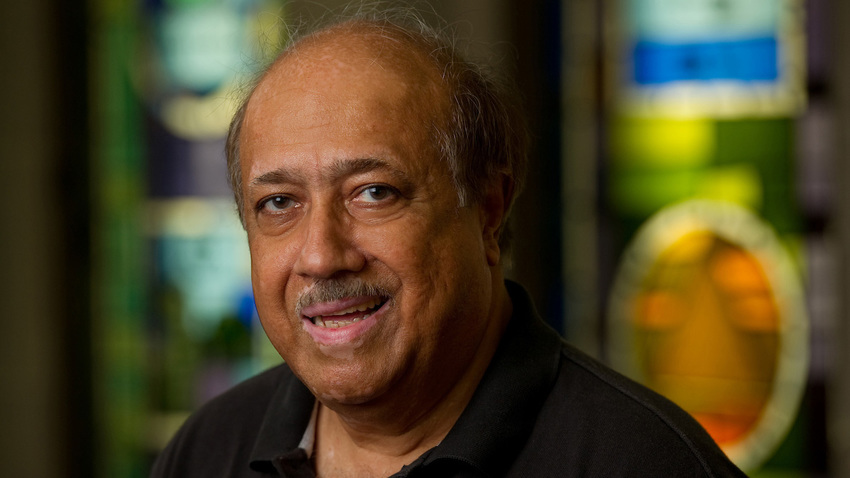
Ahsan Kareem, the Robert Moran Professor of Civil & Environmental Engineering & Earth Sciences, has been elected as a foreign member of the Chinese Academy of Engineering (CAE). The CAE and the Chinese Academy of Sciences are China’s top two think tanks that advise the government and industry on scientific and technological issues. A lifelong honor, election as a foreign member of the CAE is the highest distinction in China in the field of engineering. New members are elected every two years.
Recognized for his distinguished contributions to civil engineering and the promotion of Chinese-American exchanges and cooperation in engineering sciences and technology, Kareem is one of a class of 67 prominent Chinese and foreign engineers and scientists elected to membership in 2017. The induction ceremony will take place in June during the 2018 CAE Annual Meeting in Beijing.
Kareem is highly regarded around the world for his expertise in wind and structural engineering, having made a major impact in advancing state-of-the-art in wind effects on structures through the characterization and formulation of wind load effects via analytical/computational/simulation/stochastic framework and fundamental experimental, laboratory and full-scale measurements. He has:
- spearheaded development of ASCE 7 wind loading standards and the development of cyberinfrastructure enabled analysis and design of structures and their shape and topology optimization.
- introduced futuristic autonomous morphing buildings and bridges to enhance their performance in real time.
- advanced cyberinfrastructure through the establishment of the first of its kind in civil engineering virtual collaboratory: VORTEX-Winds for research and education in wind effects.
- established, in collaboration with his colleagues, a unique “Living Laboratory” for performance evaluation via full-scale monitoring of a network of signature tall buildings around the world — including the world’s tallest building the Burj Khalifa — for their design validation.
- introduced the first advanced modeling and simulation schemes for nonstationary winds, nonlinear aerodynamics with implications on flutter and buffeting analysis of super long bridges and compliant offshore platforms (e.g., tension leg platforms) under wind, waves and currents.
He is currently a co-principal investigator and senior researcher for National Science Foundation major research centers under the Natural Hazards Engineering Research Infrastructure program, dealing with cyberspace infrastructure and simulation and modeling for natural hazards.
Beyond his research, he has distinguished himself as an international leader through his service as the president of the International Association for Wind Engineering and has served as president of the American Association for Wind Engineering and in top-level senior leadership positions of the Structural Engineering and Engineering Mechanics Institutes of the American Society of Civil Engineers (ASCE). He currently serves as an honorary professor at Tongji University; Southwest Jiaotong University; Hong Kong Polytechnic University; Central South University; Shijiazhuang Tiedo University; and as a distinguished visiting professor at NanjingTech University. This is in addition to guest professorships at Beijing Jiaotong University; Chongqing University; the Southeast University, Nanjing; and Tokyo Polytechnic University. Kareem was also appointed by the State Council of the People’s Republic of China as a high-end consultant to Tongji University — the highest level of appointment given to a foreign expert in China.
His other honors include the 2017 Masanobu Shinozuka Medal from the ASCE, the 2015 Theodore Von Karman Medal from the ASCE, the 2015 Croes Medal and the Distinguished Research Award by the International Association for Structural Safety and Reliability in 2013.
He has also received the ASCE’s State-of-the-Art Award for scholarly contributions to full-scale monitoring of tall buildings; was selected the inaugural recipient of the Alan G. Davenport Medal; and was awarded the Robert H. Scanlan Medal for outstanding original contributions to the study of wind-load effects on structural design, as well as the Jack E. Cermak Medal in recognition of his contributions to the study of wind effects on structures. His receipt of the von Karman, Shinozuka, Davenport, Scanlan and Cermak medals is unmatched in mechanics and structural engineering fields.
He was the founding editor-in-chief of Wind and Structures and served as the editor or on the editorial boards of many leading international journals, including as guest editor-in-chief and member editorial board of the CAE journal Engineering and executive editor-in-chief of the CAE journal Frontiers of Structural and Civil Engineering.
Kareem is a distinguished member of ASCE, a member of the U.S. National Academy of Engineering and a foreign fellow of the Indian National Academy of Engineering. In 2012 he was inducted to the Offshore Technology Conference Hall of Fame for his papers, which have generated a lasting impact on the design, construction or installation of offshore infrastructure.
Originally published by at conductorshare.nd.edu on November 29, 2017.